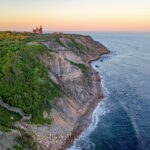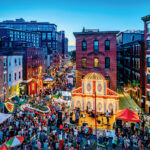Hidden Gems in New England Museums: 24 Crowd Favorites and Surprises You Need to See
Find your new favorite in our list of famous pieces and hidden gems in New England museums—from ancient Buddha statues and moon rocks to bee-wing jewelry and Norman Rockwell originals.
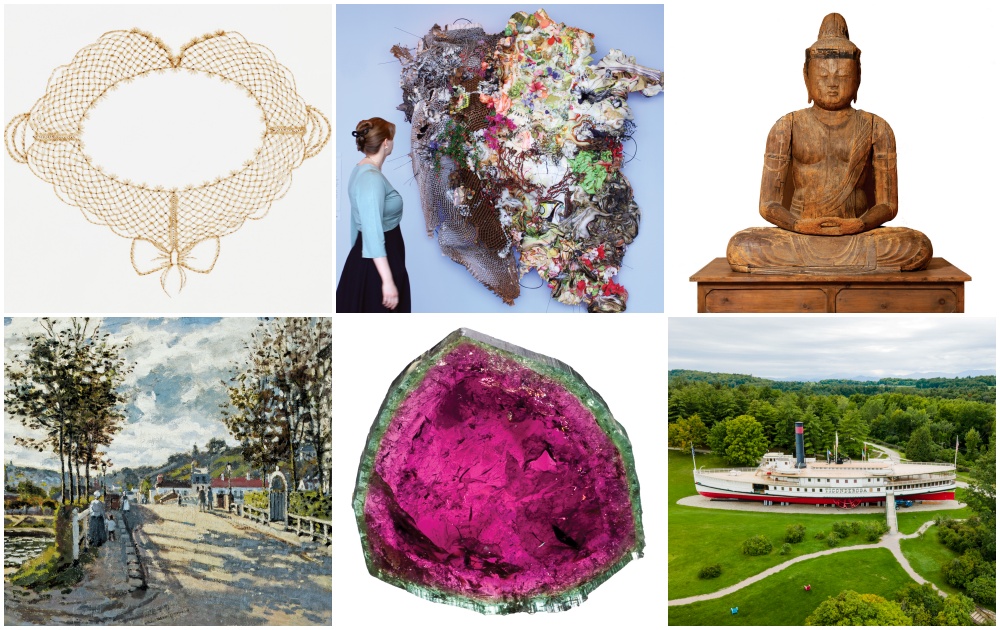
Hidden Gems in New England Museums: 24 Crowd-Favorites and Surprises You Need to See
Photo Credit: See individual museum credits in captions below.New England’s museum collections span history, time, and even space. Within these cultural treasure chests you’ll find famous art and artifacts, but also under-the-radar gems you didn’t know you needed to see … until now.
24 Crowd Favorites and Hidden Gems in New England Museums
Vermont Museums
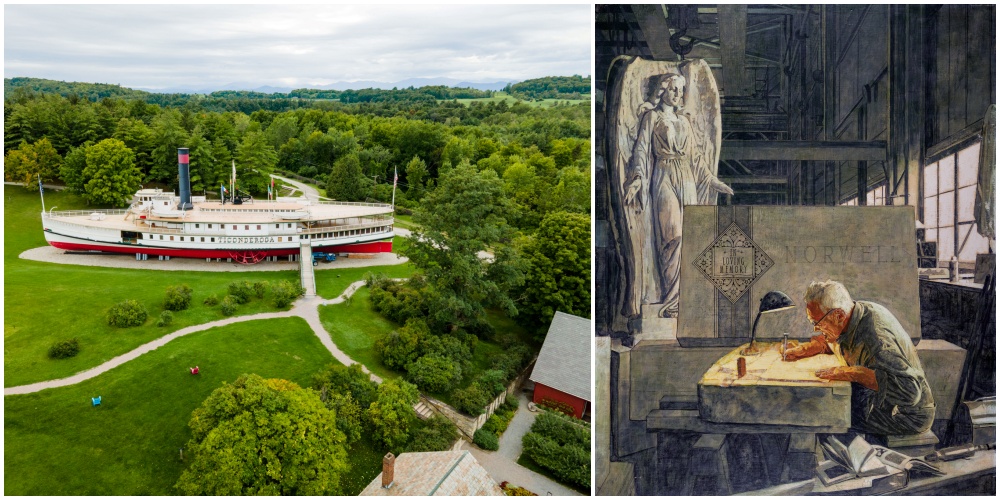
Photo Credit : Courtesy of The Shelburne Museum
Shelburne Museum | Shelburne, VT
The Crowd-Pleaser: Board the 220-foot steamship Ticonderoga in its landlocked berth, and explore the four decks, pilothouse, and crew’s quarters. This year marks the 70th anniversary of the ship’s arrival at the Shelburne Museum—a feat of maritime preservation.
The Cool Surprise: Created as part of a 1960s national ad campaign to promote Vermont’s granite industry, Norman Rockwell’s The Craftsman sketch is one of three works by the legendary illustrator newly acquired by the Shelburne Museum from the Rock of Ages quarry. (The name “Norwell” engraved on the headstone is a playful self-reference.)
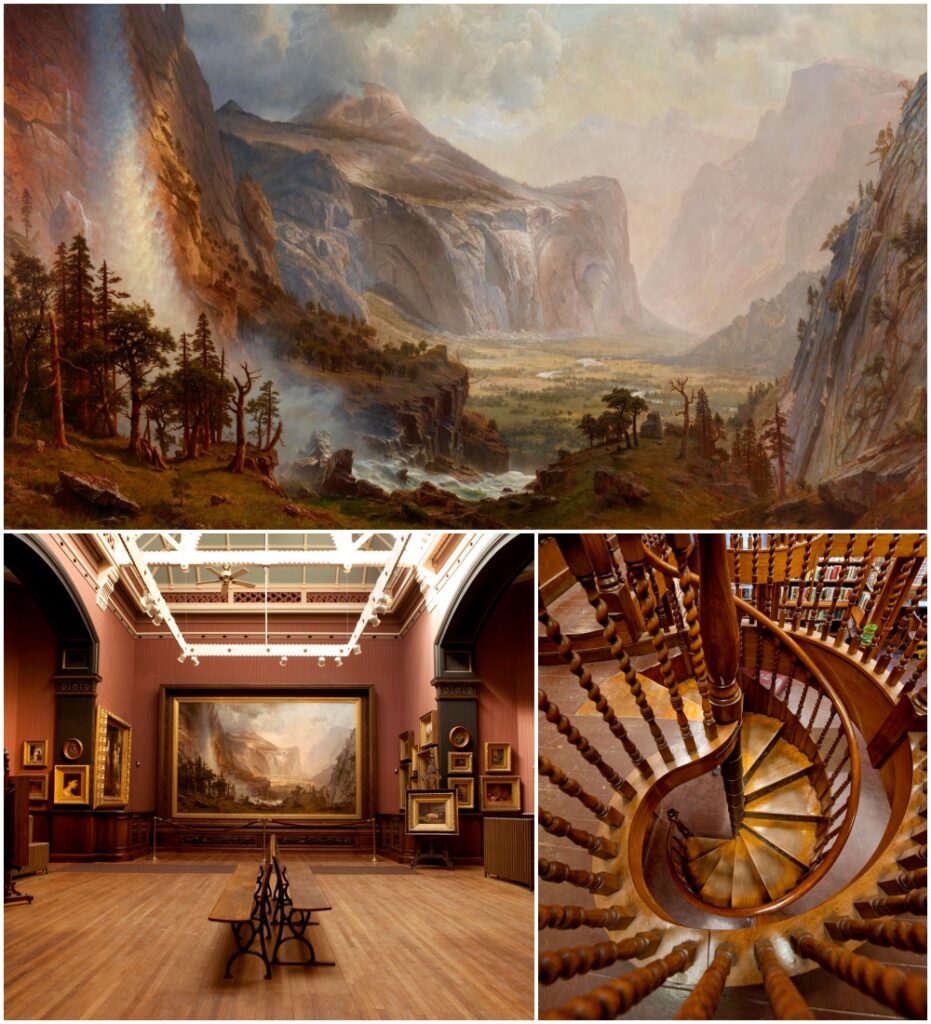
Photo Credit : Courtesy of St. Johnsbury Athenaeum
Bonus Pick: St. Johnsbury Athenaeum | St. Johnsbury, VT
The Crowd-Pleaser: Benefactor Horace Fairbanks added a room specifically for The Domes of the Yosemite oil painting, featuring it prominently in what today is the oldest unaltered gallery in the country. The giant 10×15-foot landscape depicts the grandeur of the Yosemite Valley and is based on artist Albert Bierstadt’s visits to the West Coast in the mid-1860s.
The Cool Surprise: Within the masterpiece of this building (a National Historic Landmark), look for the library’s two spiral staircases (no longer in use). The risers feature delicate scrollwork, and walnut balusters support a sheening banister curving to a second-floor balcony. It’s a good reminder that architecture is as much an art as the framed pieces that hang on the walls.
Massachusetts Museums
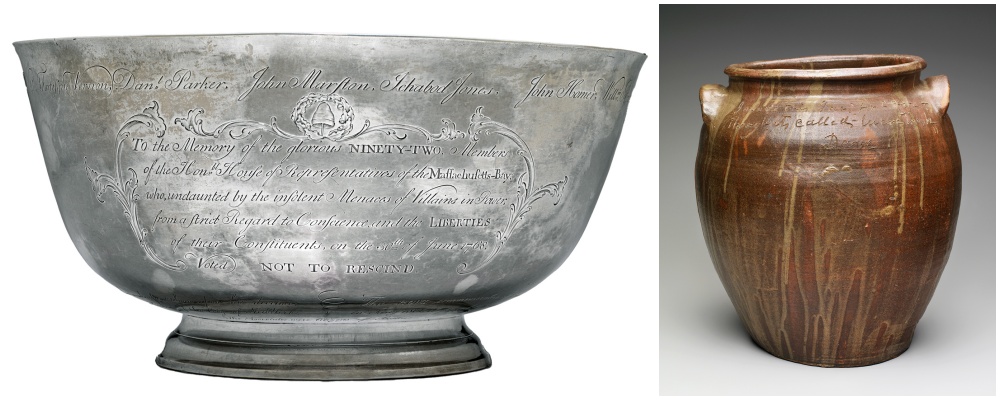
Photo Credit : Courtesy of Museum of Fine Arts, Boston
Museum of Fine Arts, Boston | Boston, MA
The Crowd-Pleaser: Paul Revere himself made the celebrated Sons of Liberty Bowl in 1768 at his Boston workshop, likely by melting down old silver coins. The secret society of Revolutionaries who commissioned the bowl used it for serving rum punch at their meetings.
The Cool Surprise: For another perspective on U.S. history, look for the large stoneware storage jar crafted in 1857 by an enslaved South Carolina man named David Drake. Adding a line of verse and his name, “Dave,” to his work was a daring move for someone who had to learn to read and write outside the law.
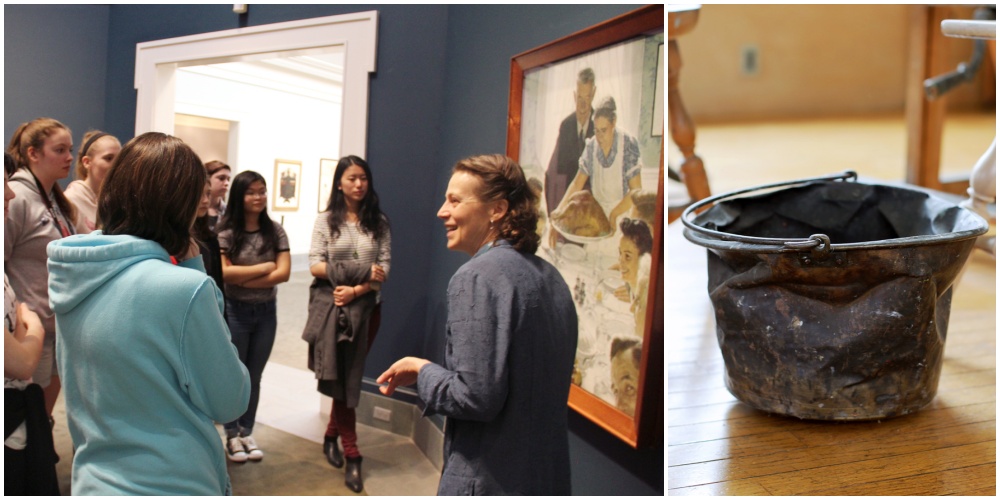
Photo Credit : Courtesy of the Norman Rockwell Museum
Bonus Pick: Norman Rockwell Museum | Stockbridge, MA
The Crowd-Pleaser: Freedom From Want, Freedom From Fear, Freedom of Speech, and Freedom of Worship: These iconic images were inspired by a 1941 address to Congress by President Roosevelt. Today, the Four Freedoms oil paintings by Norman Rockwell are a cornerstone in the museum’s permanent collection, and just as relevant as when they were first conceived.
The Cool Surprise: On the floor next to the painting easel in Rockwell’s studio, a brass bucket held paint rags and dumped pipe ashes. But sometimes that combination created small fires; the bucket would quickly get thrown outside and took some dings and dents to show for it.
New Hampshire Museums
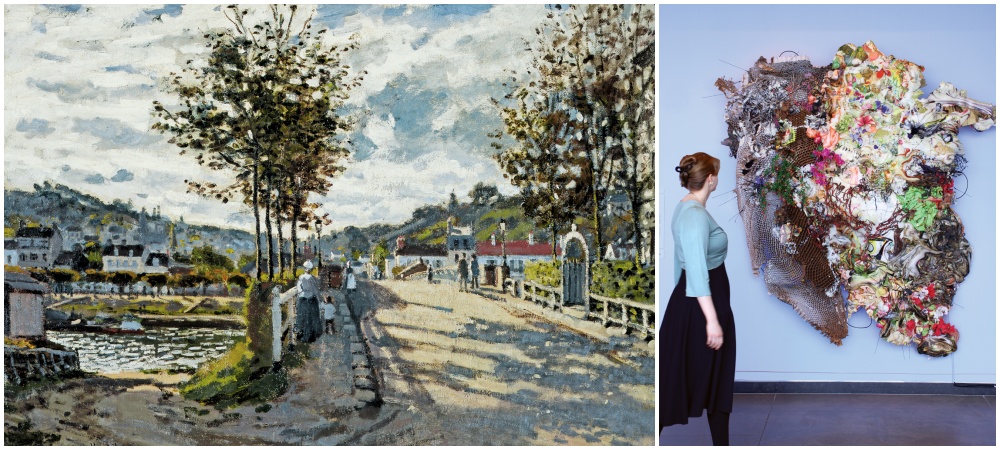
Photo Credit : Courtesy of the Currier Museum of Art
Currier Museum of Art | Manchester, NH
The Crowd-Pleaser: Think the Currier is a small-town museum? Think again. One of many well-known pieces in its collection is Monet’s The Bridge at Bougival, an 1869 oil painting of a tranquil scene outside Paris. You’ll also find works by Calder, di Suvero, Matisse, Picasso, Sargent, Andrew Wyeth, and more.
The Cool Surprise: Installed just this year, Judy Pfaff’s Glazed and Confused: Rockin’ Lobster Majolica wall sculpture gives a modern nod to Victorian-era pottery with its jumble of cardboard, wire, and fake flowers in an organic shape and its mix of bold colors.
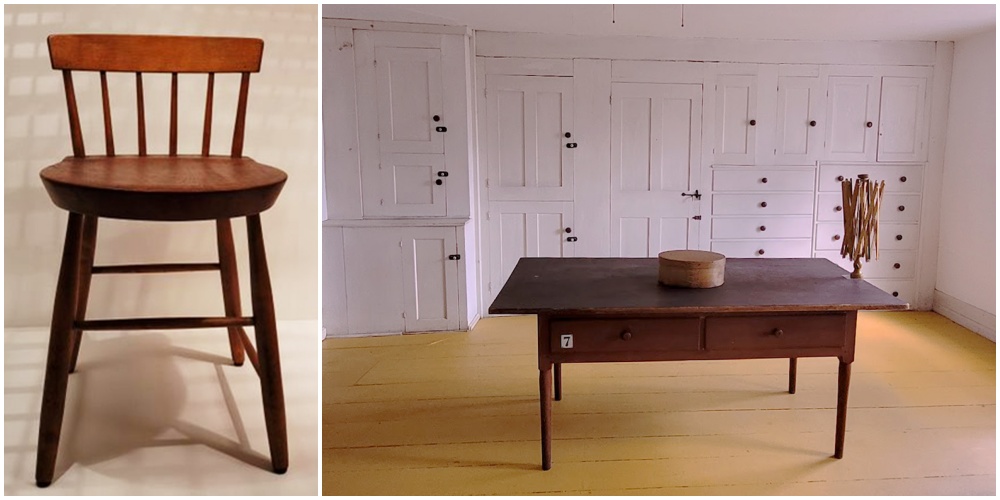
Photo Credit : Courtesy of Canterbury Shaker Village
Bonus Pick: Canterbury Shaker Village | Canterbury, NH
The Crowd-Pleaser: In 1834, Elder Micajah Tucker used pine and birch from the village to create a low-back Windsor-style Shaker dining chair. It fits neatly beneath the table, and allowed the Sisters to more easily clean up after their meals for 150 people. You can view two on display: one in the furniture exhibit in the Carriage House (visitor’s center) and another in the Dwelling House.
The Cool Surprise: The Canterbury Shakers did not invent built-in cabinetry, but they excelled in designing and constructing such convenient storage solutions. Built-ins opened floor space in the community’s many shared rooms and required less dusting. The impressive example of built-in cabinetry in the Deaconess Retiring Room forms one wall in the 1793 Dwelling House.
Maine Museums
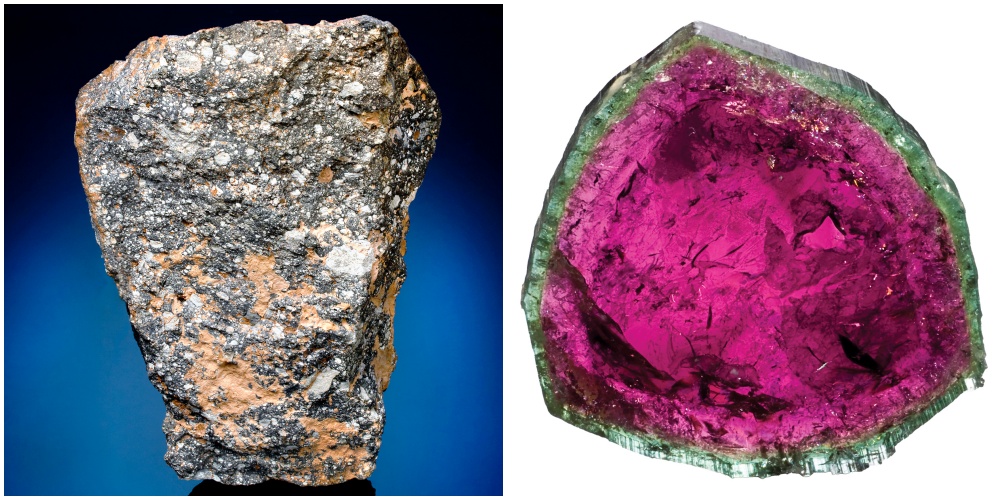
Photo Credit : Courtesy of Maine Mineral & Gem Museum
Maine Mineral & Gem Museum | Bethel, ME
The Crowd-Pleaser: Known as NWA 12760, the largest piece of the moon on display anywhere in the world is the highlight here. The meteorite weighs 128 pounds! (Although this specimen is strictly no-touch for visitors, you can hold a sizable piece of moon rock elsewhere at the museum.)
The Cool Surprise: Named for its unusual pink or red core and green exterior, watermelon tourmaline was first identified in 1910 at a quarry in Maine. This example of Maine’s state mineral—and its most popular gemstone—has been cut to show off that stunning color.
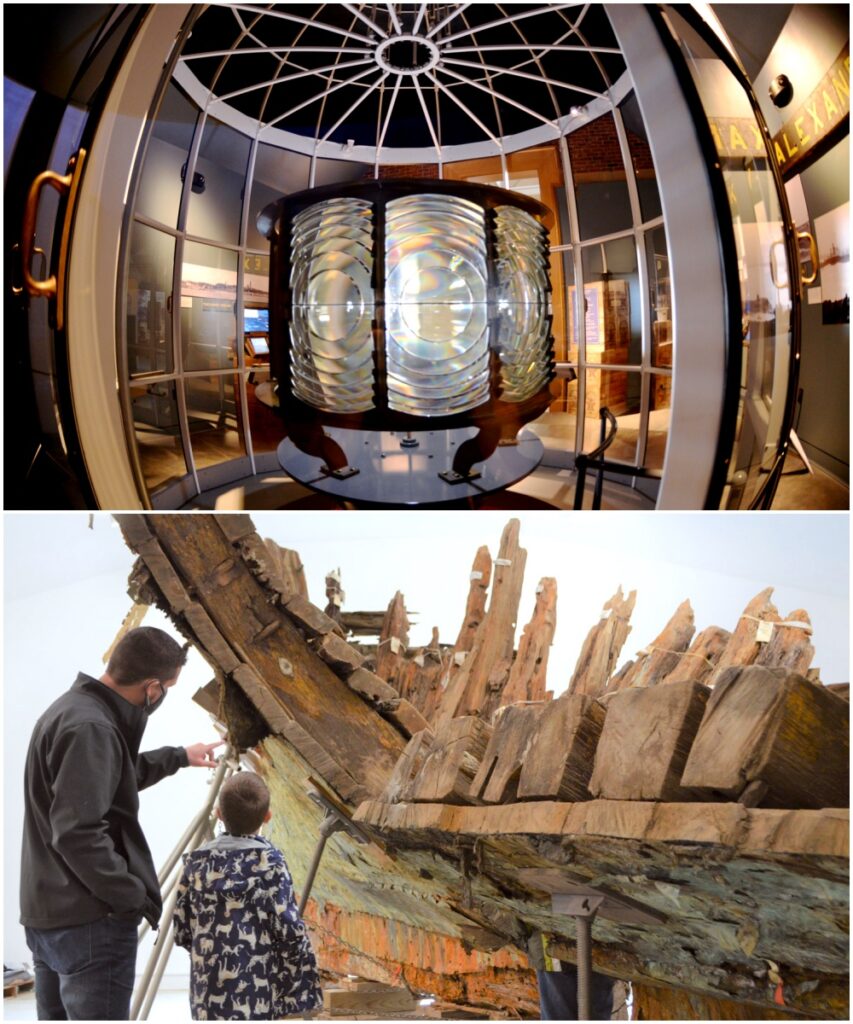
Photo Credit : Courtesy of Maine Maritime Museum
Bonus Pick: Maine Maritime Museum | Bath, ME
The Crowd-Pleaser: This original Fresnel lens, from the east tower at Two Lights in Cape Elizabeth, Maine, once shone its light 20 miles out to sea. Now see up close how the light reflects and refracts thanks to the hundreds of pieces of glass artfully constructed in a beehive shape.
The Cool Surprise: This clipper ship didn’t return to its home port, Portland. But, lucky for us, a section of its bow was uncovered in the 1980s and brought back to Maine. The Snow Squall shipwreck is the sole remaining example of these mid-nineteenth-century, American-built trade ships known for their speed.
Connecticut Museums
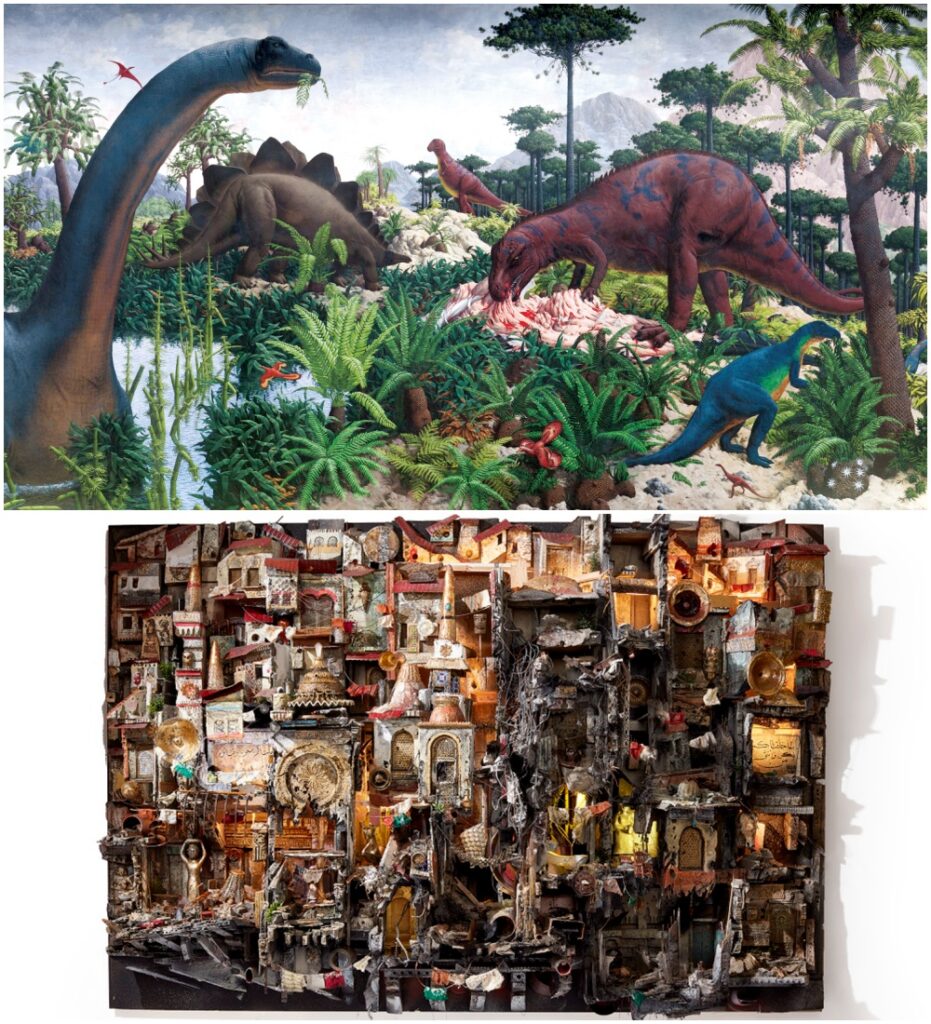
Photo Credit : Courtesy of the Yale Peabody Museum
Yale Peabody Museum | New Haven, CT
The Crowd-Pleaser: Sprawling 16 feet high and 110 feet long, Rudolph F. Zallinger’s The Age of Reptiles mural dominates the newly renovated Burke Hall of Dinosaurs—and proves that while our understanding of these creatures may have changed, their powerful hold on our imagination has not.
The Cool Surprise: By expanding the range of expertise showcased in its galleries, the Yale Peabody aspires to create a more welcoming, engaging, and relevant museum. Case in point: Eternal Cities, a mesmerizing sculptural art piece created in 2023 by local Syrian American artist Mohamad Hafez.
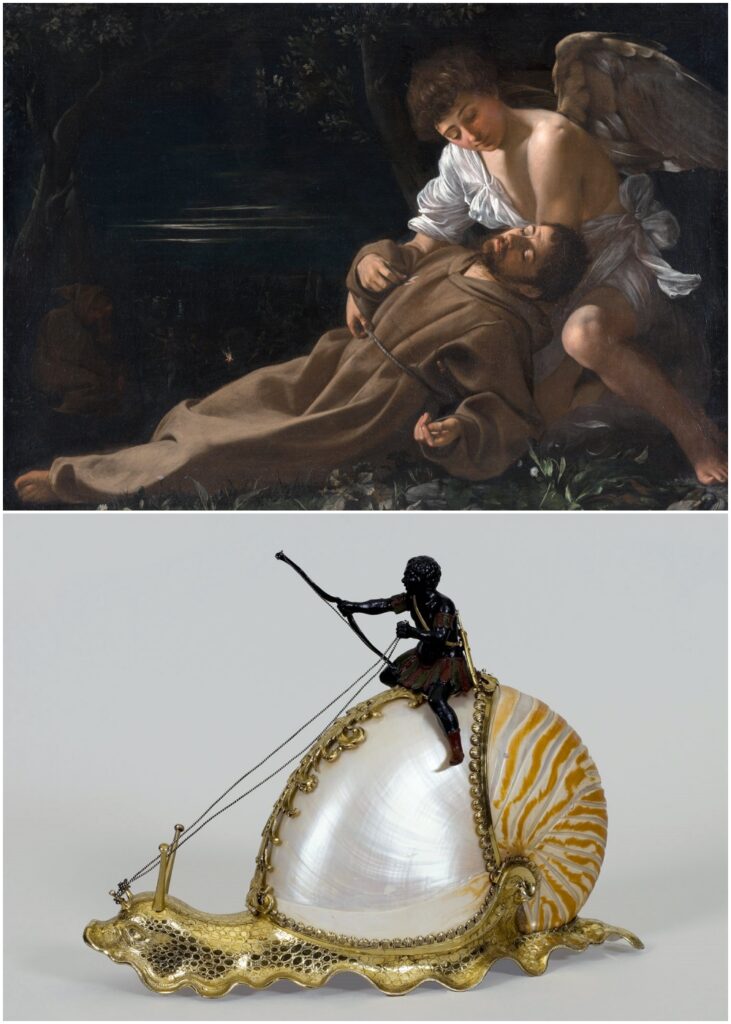
Photo Credit : Courtesy of the Wadsworth Atheneum Museum of Art
Bonus Pick: Wadsworth Athenaeum | Hartford, CT
The Crowd-Pleaser: The St. Francis of Assisi in Ecstasy oil painting, on display at the oldest continuously operating public art museum in the United States, is the first-known religious composition by Michelangelo Merisi da Caravaggio. Note the strong contrasts between the shaft of light at the center and the dark shadows. His technique was groundbreaking for the time, and became a “defining characteristic of Baroque art.”
The Cool Surprise: This gilt shell with a figure riding a top it, patiently making its way, sits in the Cabinet of Art and Curiosity gallery. The Nautilus snail collectible, donated by J. Pierpont Morgan, dates to the 1630s when personal displays of “universal learning,” featuring a mix of art and nature, were popular.
Rhode Island Museums
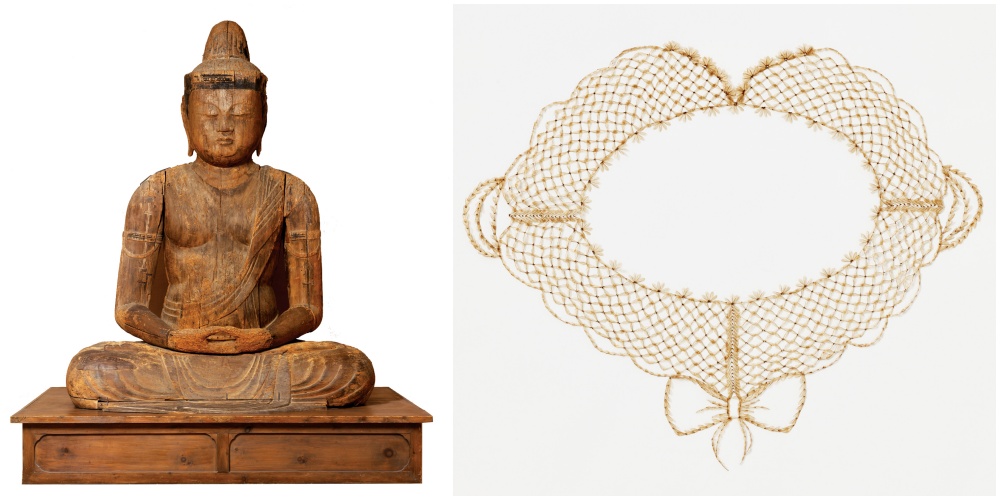
Photo Credit : Courtesy of RISD Museum
RISD Museum | Providence, RI
The Crowd-Pleaser: A stellar example of the museum’s wide-ranging collection, this 12th-century Buddha statue—the largest Japanese wooden statue in the United States—stands 10 feet tall and commands its own gallery. Legend has it that the statue was stored for centuries in a farmhouse after its original temple burned.
The Cool Surprise: Made of honeybee wings sourced humanely from RISD’s campus hives, artist Luci Jockel’s Bee Wing Lace Neckpiece honors the natural world and highlights the importance of pollinators. The design was inspired by lace in the museum’s collection.

Photo Credit : Courtesy of Newport Car Museum
Bonus Pick: Newport Car Museum | Portsmouth, RI
The Crowd-Pleaser: In a word: performance. The centerpiece of the museum’s American collection, the 1965 Ford Shelby 427 SC Cobra sports car is only 1 of 31 ever sold through dealerships—at a price of $9,600, which that year was twice the average U.S. household income. Feast your eyes on the side pipes, riveted hood scoop, and flared fenders.
The Cool Surprise: Meanwhile, your eyes might bug out at the 2006 Bugatti Veyron, a French luxury sports car. The Veyron has a top speed of 250 mph and is priced at $1,250,000. As the auto designer Ettore Bugatti once said, “Nothing is too beautiful and nothing is too expensive.” Or is it?
Let us know your favorite hidden gems in New England museums!
Parts of this article were originally published as “Double Feature” in the May/June 2025 issue of Yankee Magazine.

